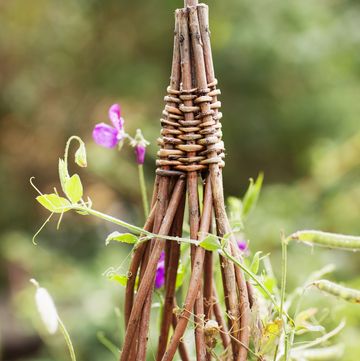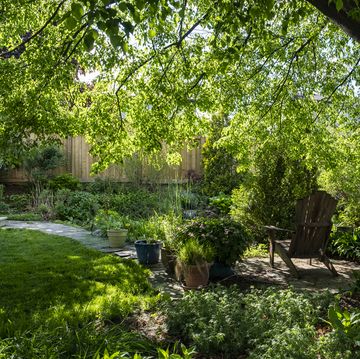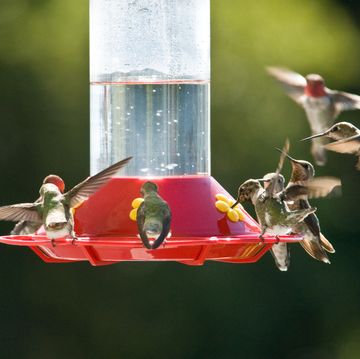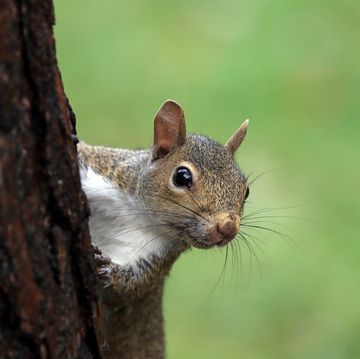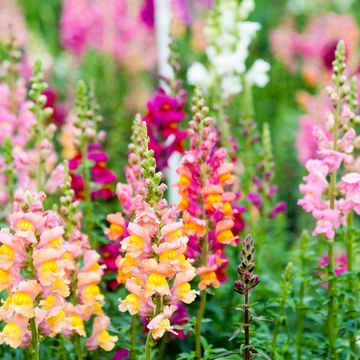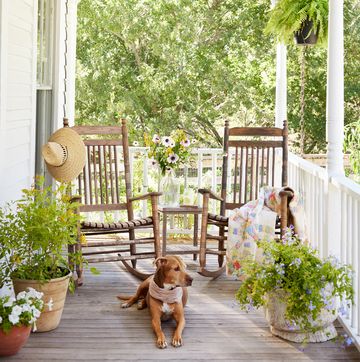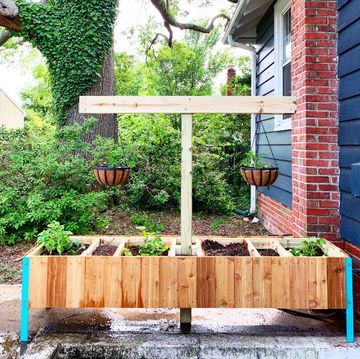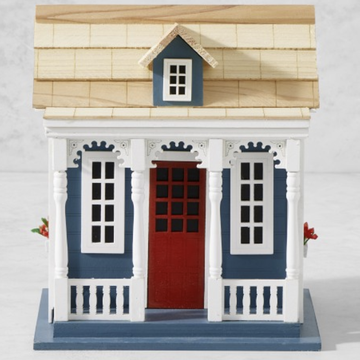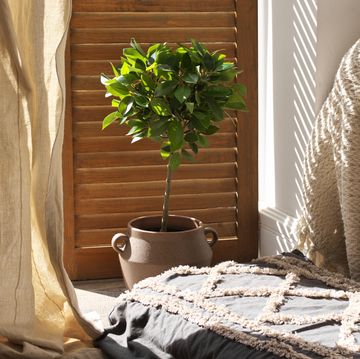Do you want to add a unique botanical statement to an empty corner of your home? Consider shopping around for an eye-catching houseplant to give your living room or even bathroom some tropical flair. The Monstera deliciosa might just be the indoor plant for you, and it's easy with the Monstera plant care tips that follow. (Pet owners: Skip this one and check out these pet-friendly alternatives instead.)
This large, gorgeous plant, often called Monstera for short, also goes by the clever "Swiss cheese plant" moniker because of the holes that develop along the leathery leaves as they mature. Confusingly, it's sometimes also called split-leaf philodendron even though it’s not part of the Philodendron genus.
Originally from the tropics of Mexico and Panama, this plant was first cultivated in 1752. In the wild, Monstera is a trailing or climbing vine that can grow up to 70 feet. When mature, the leaves can be two or three feet wide! The Monstera plant develops fruit that tastes like a mix between a banana, a pineapple, and a mango, which in South America has earned the plant another nickname: fruit salad plant. But don’t plan for a harvest just yet; as houseplants, monstera plants almost never bear fruit.
Still, it’s a fun plant to add to your collection, and in warmer climates (USDA zone 10 or warmer), it can be grown outdoors year-round. Here’s what else you need to know to take care of your Monstera plant.
All about Monstera plants, aka Swiss cheese plants
- Botanical Name: Monstera deliciosa
- Plant Family: Araceae (a group of monocotyledonous flowering plants)
- Common Names: Monstera, Swiss cheese plant, Mexican breadfruit, split-leaf philodendron, delicious monster, fruit salad plant (in reference to its edible fruit), monster fruit, monsterio delicio, windowleaf
- Type of Plant: vine
- Origin/Native Habitat: Southern Mexico and Panama / commonly found in rainforests across Central America and the Caribbean
- Sun Exposure: moderate to bright indirect light
- Preferred Soil Type/pH Range: slightly damp and well-drained / acidic and neutral
- Fertilizing Periods: every 2 weeks or at least once a month during growing season and refrain during late fall and winter
- Maturity Size: 10 to 15 feet tall indoors and stretch 8 feet wide / upwards to 70 feet tall outdoors (in its native regions)
- Blooming/Flower Color/Fruit: Rarely blooms indoors / green, white, or cream-colored blossoms / outdoors they can produce fruit that's edible when fully mature
- Hardiness Zones: 10-12 (USDA)
- Helpful Tidbits: These plants are mildly toxic to dogs, cats, and humans if it is consumed due to the insoluble oxalate crystals inside the plant. Put planters out of reach from small children and pets.
Is there more than one type of Monstera?
Yes! There are nearly 50 species of plants in the Monstera genus. Many of the plants go by the common name “Swiss cheese plant.” While they all look similar, the most common type you’ll see is the large Monstera deliciosa. It has long-lobed leaves with elongated holes, though young plants—and plants that don’t get sufficient light—will not have these holes.
Types of Monstera
Looking for a more manageable Monstera? Try the popular Monstera adansonii, which as a houseplant tends to be smaller than the Monstera deliciosa. Check out the following varieties too. With any Monstera species, the care is the same.
- Monstera borsigniana
- Monstera pinnatipartita
- Monstera variegata
- Monstera dubia
- Monstera siltepecana
- Monstera obliqua (one of the rarest varieties)
What about the "Mini Monstera"?
This plant is actually not a Monstera at all, though it is in the same family. A mini monstera (Rhaphidophora tetrasperma) is an excellent alternative to a Monstera for a similar look at a relatively smaller size (it can still grow beyond six feet!). Warning: Like Monstera plants, this one is also toxic to pets if consumed.
How do I care for my Monstera?
Sunlight Conditions: Give your Monstera plenty of moderate to bright indirect light. Avoid direct sunlight because the leaves will burn. If your window gets lots of direct sunlight, pull the plant back a bit or diffuse the light with a sheer curtain. It prefers rooms on the average or warm side, about 65 to 85 degrees. Monstera also likes humidity, so a bright bathroom is ideal.
Watering Tips: Water your Swiss cheese plant when the top inch or two feels dry to the touch (stick your finger in the soil if you’re not sure). If it feels damp or soil clings to your finger, wait a few days and check again. In the winter, you also can let it get a bit drier. Feeding isn’t entirely necessary, but if you’d like to baby it, use a general-purpose houseplant fertilizer during its growing season from spring to fall.
Additional Care Tips: If you want to encourage it to climb, give it a moss-covered stake or pole when it’s small. But you also can leave it be and let it sprawl. The big leaves do tend to get dusty, so use a damp cloth to wipe them down occasionally.
Don’t let pets near your Monstera.
Unfortunately, Monstera plants (Swiss cheese plants) contain calcium oxalate crystals, which are toxic to pets, causing irritation of the mouth, lips, or tongue and also may cause drooling, vomiting, or difficulty swallowing. If you have cats or dogs that like to dine on your houseplants, keep them away from Monstera, and call your vet ASAP if you suspect they have ingested it.
..Arricca Elin SanSone has written about health and lifestyle topics for Prevention, Country Living, Woman's Day, and more. She’s passionate about gardening, baking, reading, and spending time with the people and dogs she loves.

Janece Maze is Associate Editor at Country Living, where she covers DIY projects, gardening, and travel. When she’s not in the kitchen creating a new recipe with farm fresh ingredients, you can find her on the road heading to a music festival or browsing a local consignment shop.





